Friday, 19 March 2010
Editing and Soundtrack
Upon completion of filming our thriller, we decided to head straight into editing the piece and creating a soundtrack for it. We planned to do this by separating our group in two in order to maintain a high level of efficiency to achieve our production deadline.
One half of the group started on the editing while the other half started to create music for our soundtrack which was crucial for our piece as it was the vital element to give the thriller a much more professional look.
However, there were many adversities that we came across in both editing and the soundtrack. One of the problems in the editing stage was that in one of the point of view sequences the shadow of the camera and the actor were caught in shot, but even though we tried to cut it out it was not possible because it broke the continuity.
The other problem we had was creating a soundtrack. Although it was good it was hard to create a soundtrack for our piece as we created it on a different computer, therefore a lot of guesswork took place. Once we had finished editing our rough cut, we sent our film to the other computer making it possible for us to fit the soundtrack to the film.
One half of the group started on the editing while the other half started to create music for our soundtrack which was crucial for our piece as it was the vital element to give the thriller a much more professional look.
However, there were many adversities that we came across in both editing and the soundtrack. One of the problems in the editing stage was that in one of the point of view sequences the shadow of the camera and the actor were caught in shot, but even though we tried to cut it out it was not possible because it broke the continuity.
The other problem we had was creating a soundtrack. Although it was good it was hard to create a soundtrack for our piece as we created it on a different computer, therefore a lot of guesswork took place. Once we had finished editing our rough cut, we sent our film to the other computer making it possible for us to fit the soundtrack to the film.
Labels:
Gabriel Clarke,
Sade Mills- Isiorho,
Tom Snell,
Victor Mishra
Friday, 12 March 2010
Response to Rough Cut feedback
In response to our feedback, there are many comments which we will take action upon.
Firstly, our ending was actually unintentional, therefore our plan was to cut that part anyway.
Secondly, in regards to our piece being too bright we will use the color corrector in order to change the brightness to suit the mood of our piece more.
Finally, we will add a soundtrack to enhance the viewers experience of the thriller.
Firstly, our ending was actually unintentional, therefore our plan was to cut that part anyway.
Secondly, in regards to our piece being too bright we will use the color corrector in order to change the brightness to suit the mood of our piece more.
Finally, we will add a soundtrack to enhance the viewers experience of the thriller.
Labels:
Gabriel Clarke,
Sade Mills- Isiorho,
Tom Snell,
Victor Mishra
Feedback on Rough Cut
Camerawork:
-Good Variation of shots
Editing:
-The blending of images is effective.
- Cut the part where the guy is taking photos and put some of the writing bit in it as it is a bit long, this way it will be split up and less long winded.
Mise En Scene:
-Fake blood on injuries looks authentic. The costumes used realistic and there is good use of the camera. Attention to detail is good as the use of police tape makes it seem more realistic.
-It is naturally bright and could of been better with the use of effects such as colour corrector. -The contrast of locations is good as they have the field and the office which is good for the audience.
Sound:
-Good sound effects.
- It lacked soundtrack
- Its a good film but with a soundtrack it could be excellent.
-Good Variation of shots
Editing:
-The blending of images is effective.
- Cut the part where the guy is taking photos and put some of the writing bit in it as it is a bit long, this way it will be split up and less long winded.
Mise En Scene:
-Fake blood on injuries looks authentic. The costumes used realistic and there is good use of the camera. Attention to detail is good as the use of police tape makes it seem more realistic.
-It is naturally bright and could of been better with the use of effects such as colour corrector. -The contrast of locations is good as they have the field and the office which is good for the audience.
Sound:
-Good sound effects.
- It lacked soundtrack
- Its a good film but with a soundtrack it could be excellent.
Labels:
Gabriel Clarke,
Sade Mills- Isiorho,
Tom Snell,
Victor Mishra
Tuesday, 9 March 2010
Filming Report
Overall our day of filming was a success. Everyone turned up at the correct time and remembered any props/equipment they were responsible for. We managed our time well and made sure to film several versions of each shot. This allowed us to use the best version of every shot and make sure that the sequence looked its best. As we had carefully planned beforehand, we faced very few challenges. The main problem we faced was getting the right amount of movement whilst the camera was being dragged. If it moved too much then the viewer wouldn't be able to understand what is happening. If there was too little movement then the effect of being dragged would be lost. Another challenge we faced was the problem ensuring the viewer knew the first shot was a point of view shot. We solved this problem by showing the persons injured hand.
Labels:
Gabriel Clarke,
Sade Mills- Isiorho,
Tom Snell,
Victor Mishra
Thursday, 4 March 2010
Thriller Conventions
A crime at the core of the narrative (often murder, but not necessarily).
A complex narrative structure, with false paths, clues and resolutions.
A narrative pattern of establishing enigmas which the viewer expects to be resolved.
A protagonist who is systematically dis-empowered and drawn into a complex web of intrigue by the antagonist.
Extraordinary events happening in ordinary situations.
Themes of identity.
Themes of mirroring.
Themes of voyeurism.
Protagonist with a ‘flaw’ which is exploited by the antagonist.
Titles often reflect an aspect of the pro/antagonist’s psychological state.
There is often a scene near the end of the film in which the protagonist is in peril.
Mise en scene which echoes/ mirrors the protagonist’s plight.
A complex narrative structure, with false paths, clues and resolutions.
A narrative pattern of establishing enigmas which the viewer expects to be resolved.
A protagonist who is systematically dis-empowered and drawn into a complex web of intrigue by the antagonist.
Extraordinary events happening in ordinary situations.
Themes of identity.
Themes of mirroring.
Themes of voyeurism.
Protagonist with a ‘flaw’ which is exploited by the antagonist.
Titles often reflect an aspect of the pro/antagonist’s psychological state.
There is often a scene near the end of the film in which the protagonist is in peril.
Mise en scene which echoes/ mirrors the protagonist’s plight.
Evaluation Questions
1. In what ways does your media product use, develop or challenge forms and conventions of real media products?
2. How does your media product represent particular social groups?
3. What kind of media institution might distribute your media product and why?
4. Who would be the audience for your media product?
5. How did you attract/address your audience?
6. What have you learnt about technologies from the process of constructing the product?
7. Looking back to your preliminary task, what do you feel that you have learnt in the progression from it to the full product?
2. How does your media product represent particular social groups?
3. What kind of media institution might distribute your media product and why?
4. Who would be the audience for your media product?
5. How did you attract/address your audience?
6. What have you learnt about technologies from the process of constructing the product?
7. Looking back to your preliminary task, what do you feel that you have learnt in the progression from it to the full product?
Labels:
Gabriel Clarke,
Sade Mills- Isiorho,
Tom Snell,
Victor Mishra
Tuesday, 2 March 2010
Target Audience
The target audience for our thriller is the teenage and young adult market. This is because our thriller may be deemed unsuitable for a younger audience. Our film would appeal to people who have previously seen and enjoyed thrillers. The BBFC rating we will use will be 15. This is because we feel that this is the best rating as it gives us a much larger potential audience, while still giving us the opportunity to explore more adult themes and contain more violent, potentially distressing images.
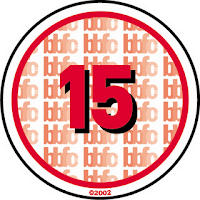

Labels:
Gabriel Clarke,
Sade Mills- Isiorho,
Tom Snell,
Victor Mishra
Thursday, 25 February 2010
Evaluation Questions
1. In what ways does your media product use, develop or challenge forms and conventions of real media products?
2. How does your media product represent particular social groups?
3. What kind of media institution might distribute your media product and why?
4. Who would be the audience for your media product?
5. How did you attract/address your audience?
6. What have you learnt about technologies from the process of constructing the product?
7. Looking back to your preliminary task, what do you feel that you have learnt in the progression from it to the full product?
2. How does your media product represent particular social groups?
3. What kind of media institution might distribute your media product and why?
4. Who would be the audience for your media product?
5. How did you attract/address your audience?
6. What have you learnt about technologies from the process of constructing the product?
7. Looking back to your preliminary task, what do you feel that you have learnt in the progression from it to the full product?
Labels:
Gabriel Clarke,
Sade Mills- Isiorho,
Tom Snell,
Victor Mishra
Tuesday, 23 February 2010
Analysis of Crime Thrillers
The Bodyguard is a crime thriller. It begins with simple opening credits with the associates and main characters names on a black background/ screen. When the titles fade out of view, there is just a plain black, silent screen, which creates suspense as the viewer would not know what to expect. Then there is a sudden loud gun shot, before the first character is introduced. There is a close up of the gun being shot and the characters (shooters) face behind it, which allows the viewer to then see where the shots were coming from. The close up does not allow you to see a background which restricts the viewers from seeing the cause of the shooting or seeing who or what is being shot at. It then switches to another character who is being kept down by the shooter, which may put many questions into the viewers mind as they are unaware of why he is being held down or maybe hostage. When the camera begins to zoom out the film title appears in a large, bold font and the music begins. The camera then moves around the room which then becomes apparent to the viewer is a car park, it shows a person lying on the floor not moving who had obviously been shot at. At this point in the film the viewer can not be sure on whether the shooter character is a good or bad character. The music used in this particular scene of the clip is a sad/ mellow type of music which could be related to a type of crime film. The titles in this film do not tie into the film, the are just simply placed on top .
Friday, 12 February 2010
Saul Bass
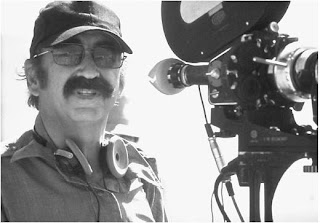
One of the best filmmakers and graphic designers was Saul Bass. Amongst his most famous title sequences are the animated paper cut-out of a heroin addict's arm for Preminger's The Man With The Golden Arm, the text racing up and down what eventually becomes a high-angle shot of the United Nations building in Alfred Hitchcock's North By Northwest, and the disjointed text that raced together and was pulled apart for Psycho (1960).
Film Noir research
Film noir is a sub genre of the thriller genre. It i characterised by a dark mood, cynicism and sexual motivations. An example of a Film noir is the 1946 Robert Siodmak film 'The Killers'.
This opening uses several thriller conventions. For example, it focuses around a central crime. Other conventional techniques used include violence. The murder of 'The Swede' is typical of the thriller genre as the violence itself is not shown in graphic detail. Tension is created by seeing The Swede in his bed cut with images of the murderes approaching his room. Another convention used is the heavily shadowed 'Chiascuro' lighting. This technique builds up the overall mystery of the film, and contributes to the tension. Here is an example below:
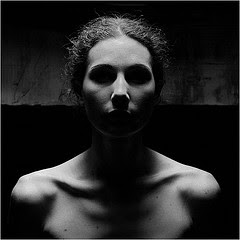
This opening uses several thriller conventions. For example, it focuses around a central crime. Other conventional techniques used include violence. The murder of 'The Swede' is typical of the thriller genre as the violence itself is not shown in graphic detail. Tension is created by seeing The Swede in his bed cut with images of the murderes approaching his room. Another convention used is the heavily shadowed 'Chiascuro' lighting. This technique builds up the overall mystery of the film, and contributes to the tension. Here is an example below:

Alfred Hitchcock Research
Sir Alfred Joseph Hitchcock, KBE (13 August 1899 – 29 April 1980) was an English filmaker and producer who pioneered many techniques in the suspense and psychological thriller genres. After a successful career in his native United Kingdom in both silent films and early talkies, Hitchcock moved to Hollywood. In 1956 he became an American citizen while retaining his Britsh citizenship.
Hitchcock directed more than fifty feature films in a career spanning six decades. Often regarded as the greatest British filmmaker, he came first in a 2007 poll of film critics in the Daily Telegraph newspaper, which said: "Unquestionably the greatest filmmaker to emerge from these islands, Hitchcock did more than any director to shape modern cinema, which would be utterly different without him. His flair was for narrative, cruelly withholding crucial information (from his characters and from us) and engaging the emotions of the audience like no one else.
Conventions that this clip conforms to include:
A flawed hero: The photographer with the broken leg
Location: Busy with the hustle and bustle of peoples flats
Voyeurism: The photographer sees into peoples private lives, possibly seeing things he shouldn't
Objectification of women: All the women in the clip seem to be running around doing things for the injured man.
Thursday, 11 February 2010
The task for this project was to produce a video in which a character was tied up, creating a sense of claustrophobia through the use of the camerawork, chosen location, editing and sound.
Our film had to include these shot types:
- Close-up
- Extreme Close-up
- Mid Shot
- Long Shot
- Pan
- Slow Zoom In
- Point Of View
- High Angle
- Low Angle
Overall I think we completed this task well as our footage and soundtrack all fit together, and create the atmosphere, sense of panic and fear of the unknown that was required.
Thriller Practice
Our task was to create a 1 minute sequence of someone being tied up, whilst creating a sense of claustrophobia and panic, through camerawork, editing and music. We used the following camera shots:
- Extreme close up
- Close up
- Mid shot
- long shot
- Pan
- Zoom in/out
- Point of View
- High Angle
- Low Angle
Camera Work Practice
The objective of the camera work practice was to put everyone in different groups and assign them roles which they would usually not take.
I was assigned the role of the camera man. This involved making sure all of the shots in the shot list were included in the scene and making it easily recognizable for the audience. As I had missed some of the practical lessons earlier on in the year, it was vital that I had a chance to take on some practical work with the camera and this improved my camera work skills.
I feel that given the time we had to film, edit, and make a soundtrack (one and a half lessons) we worked effectively and efficiently as a team, all undertaking each role and helping each other out with knowledge of our individual areas.
I worked closely with the shot list, ticking each one off as I filmed it. I think I included all of the shots in the shot list and made each of them clear to see.
Friday, 5 February 2010
Prop Responsibilities
Tom:
Fake gun, 'forensics suit', fake blood, waterproof trousers
Gabriel:
Stills camera, police tape, surgeons gloves
Victor:
Wellington boots,
Fake gun, 'forensics suit', fake blood, waterproof trousers
Gabriel:
Stills camera, police tape, surgeons gloves
Victor:
Wellington boots,
Labels:
Gabriel Clarke,
Sade Mills- Isiorho,
Tom Snell,
Victor Mishra
Thursday, 4 February 2010
Test for animation of Title Sequence
We wanted to replicate the jittery effect used in the title sequence of 'Se7en'. By using Final Cut, we managed to animate the text so it moved tiny amounts at a time. This was extremely time consuming, so if it is used in our opening we will make less individual movements and simply loop the piece.
Labels:
Gabriel Clarke,
Sade Mills- Isiorho,
Tom Snell,
Victor Mishra
Practice titles
As you want to keep the audience interested in the film, the opening sequence and titles are vital in keeping the audience's attention because it is the first few minutes of a film that can potentially reel them in for the whole movie.
There are four members in our group, so we are likely to include the four main titles in our credits. Here is an example of some of the titles we intend to use:
However, we are using it in the point of view sequence where Victor is falling in and out of consciousness. This allows us to fade in titles when drifting out of consciousness a few times, starting with titles such as Editor/Sound etc and then director. After the climax, (Being shot) the title of the movie will appear.
Consequently, we hope that, by adding in the titles during the tense moments it will give a professional look to it rather than just sticking them in at the end.
There are four members in our group, so we are likely to include the four main titles in our credits. Here is an example of some of the titles we intend to use:
- Director - Tom Snell
- Cinematographer - Gabriel Clarke
- Sound - Sade Mills-Isiorho
- Editor - Victor Mishra
However, we are using it in the point of view sequence where Victor is falling in and out of consciousness. This allows us to fade in titles when drifting out of consciousness a few times, starting with titles such as Editor/Sound etc and then director. After the climax, (Being shot) the title of the movie will appear.
Consequently, we hope that, by adding in the titles during the tense moments it will give a professional look to it rather than just sticking them in at the end.
Labels:
Gabriel Clarke,
Sade Mills- Isiorho,
Tom Snell,
Victor Mishra
How are titles used? - Sade Mills-Isiorho
I think that the titles in the opening sequence to 'Catch me if you can' relates to the narrative of the film as it shows a person trying to escape/ run away from other people. The opening sequence to this film is animated and the titles in this sequence are very simple and subtle as they are shown as part of the scene, i.e. the letters from the words acting as a bridge for the cars to go under. The titles in this sequence also move with the the animation, for example the words move up as the characters move up and form a ladder for the character to climb up. I feel this is an effective way of connecting the titles to the opening sequence/ narrative as titles tend to be a necessity in the film world and not very interesting for the audience. By animating and adding motion to the titles it makes it more visual for the viewer which makes it's more interesting to watch.
Shot List
1 Point of View
Props: Sack
Being dragged, sack over camera simulating bag over head. Conversation can be heard, but is heavily distorted. Some light visible through sack.
2 Point of View
Props: Sack
The bag is removed, revealing isolated location. Fade out, showing character slipping out of consciousness.
3 Point of View
Props: N/A
Fade from black back to image, having moved to a new location. Still being dragged. Fade out again
4 Point of view/Canted Angle
Props: Gun
Fade back in. The camera is looking at the floor. Pans up at a canted angle, revealing a person sanding in front of the camera, pointing a gun. Pan up just short of revealing their face.
6 Close up
Props: Gun
Close up on gun, emphasizing barrel.
7 High angle/ Long shot
Props:Gun
Looking down on scene of imminent murder. This is the only time we see the character the POV shots were representing. As the shot is fired, the 'camera character' slumps forward. Fade to black, with the title fading in over the black.
9 Establishing shot
Props: Police Tape, Camera
Police tape strung between two trees in foreground. In background, forensic scientist taking photos of crime scene.
From here, all shots are only few frames in duration
10 Med. Shot
Props: Camera
Forensic taking photo of corpse.
11 Close up
Props: Photos of body
Close up of photos scattered on desk
12 Extreme close up
Props: Autopsy forms, Pens
Close up of forms being filled in. Focus on words linked to murder/injury, such as 'Homicide' or 'Damage'
Props: Sack
Being dragged, sack over camera simulating bag over head. Conversation can be heard, but is heavily distorted. Some light visible through sack.
2 Point of View
Props: Sack
The bag is removed, revealing isolated location. Fade out, showing character slipping out of consciousness.
3 Point of View
Props: N/A
Fade from black back to image, having moved to a new location. Still being dragged. Fade out again
4 Point of view/Canted Angle
Props: Gun
Fade back in. The camera is looking at the floor. Pans up at a canted angle, revealing a person sanding in front of the camera, pointing a gun. Pan up just short of revealing their face.
6 Close up
Props: Gun
Close up on gun, emphasizing barrel.
7 High angle/ Long shot
Props:Gun
Looking down on scene of imminent murder. This is the only time we see the character the POV shots were representing. As the shot is fired, the 'camera character' slumps forward. Fade to black, with the title fading in over the black.
9 Establishing shot
Props: Police Tape, Camera
Police tape strung between two trees in foreground. In background, forensic scientist taking photos of crime scene.
From here, all shots are only few frames in duration
10 Med. Shot
Props: Camera
Forensic taking photo of corpse.
11 Close up
Props: Photos of body
Close up of photos scattered on desk
12 Extreme close up
Props: Autopsy forms, Pens
Close up of forms being filled in. Focus on words linked to murder/injury, such as 'Homicide' or 'Damage'
Labels:
Gabriel Clarke,
Sade Mills- Isiorho,
Tom Snell,
Victor Mishra
How are titles used? - Victor Mishra
In this opening scene of Pulp Fiction, the titles are used separately from the action. However, the credits begin when the action reaches towards the climax, and the titles of the movie is shown.
Some of the first credits include the production companies, and then the director, with actors coming afterwards. The black on yellow contrast really makes the credits stand out as they are contrasting and in your face.
Wednesday, 3 February 2010
Detailed Props List
Hessien Sack- This will be placed over the camera during the POV shots to create the illusion that the character has their head covered. Once removed, it will be visible on the ground throughout the rest of the sequence.
Gun- A replica BB gun will be used. It will feature in a variety of different shots, including the POV shots, a close up and a long shot.
Stills Camera- During the 'fast cut' sequence, the image of a forensic scientist taking photos of the crime scene we feature
Photos- Photos, presumably taken by the scientist, will show areas of the crime scene.
Warning Tape- Similar to the camera, this will feature in the 'fast cut' sequence.
Autopsy/Police Forms- Again, during the 'fast cut' sequence we will see various police forms being filled out, with close ups on key words.
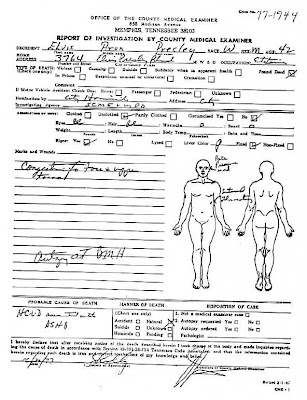
Gun- A replica BB gun will be used. It will feature in a variety of different shots, including the POV shots, a close up and a long shot.
Stills Camera- During the 'fast cut' sequence, the image of a forensic scientist taking photos of the crime scene we feature
Photos- Photos, presumably taken by the scientist, will show areas of the crime scene.
Warning Tape- Similar to the camera, this will feature in the 'fast cut' sequence.
Autopsy/Police Forms- Again, during the 'fast cut' sequence we will see various police forms being filled out, with close ups on key words.
Labels:
Gabriel Clarke,
Sade Mills- Isiorho,
Tom Snell,
Victor Mishra
Monday, 1 February 2010
How are titles used? -Gabriel Clarke
I feel that the opening credits for Sin City are very effective because they are not too complicated and they portray the origin of the film (the Graphic Novel), this also layered with a suitable tension building soundtrack wants us to watch on and find out what the characters shown in the background do and contribute to the story-line. The red text against the otherwise monochrome images add to a sense of danger and uneasiness.
We hope to replicated this simple yet effective opening credits by having our moving picture fading in and out in the background, much like Sin City.
Sunday, 31 January 2010
How are titles used?- Tom Snell
The titles used in the opening to 'Se7en' are used to emphasise the themes of the film and reveal characteristics of the films protaganist. The scrawling, hand written look of the titles show the psychological themes of the film, as the reflect on the villains state of mind. A similar effect is created by the often disturbing images in the background. This, combined with the soundtrack, creates a mood of unease in the viewer.
In our thriller, we hope to replicate the rapid cuts of the title sequence, with images of the crime scene and police equipment in the background.
Friday, 29 January 2010
Definition of thriller, outline of different sub genres and hybrids
Thriller - Thrillers are characterized by fast pacing, frequent action, and resourceful heroes who must thwart the plans of more powerful and better equipped villains.
Sub-genres
The thriller genre can include the following sub-genres, which may include elements of other genres:
- Action thriller: In which the work often features a race against the clock, contains lots of violence, and an obvious antagonist. These films usually contain large amounts of guns, explosions, and large elaborate set pieces for the action to take place. These films often have elements of mystery films and crime films but these elements take a backseat to action. Notable examples are the James Bond films, The Transporter, and the Jason Bourne novels and films.
- Conspiracy thriller: In which the hero/heroine confronts a large, powerful group of enemies whose true extent only he/she recognizes. The Chancellor Manuscript and The Aquitane Progression by Robert Ludlum fall into this category, as do films such as Three Days of the Condor, Capricorn One, and JFK.
- Crime thriller: This particular genre is a hybrid type of both crime films and thrillers that offers a suspenseful account of a successful or failed crime or crimes. These films often focus on the criminal(s) rather than a policeman. Crime thrillers usually emphasize action over psychological aspects. Central topics of these films include murders, robberies, chases, shootouts, and double-crosses are central ingredients. Some examples include The Killing, Seven, Reservoir Dogs, Inside Man, and The Asphalt Jungle.
- Disaster thriller: In which the main conflict is due to some sort of natural or artificial disaster, such as floods, earthquakes, hurricanes, volcanoes, etc., or nuclear disasters as an artificial disaster. Examples include Stormy Weather by Carl Hiaasen, Tremor by Winston Graham, and the 1974 film Earthquake.
- Drama thriller: In which the story consists of the elements of a thriller and drama film. These films are usually slower paced and involves a great deal of character development along with plot twists. Examples include The Illusionist, The Interpreter and The Prestige.
Labels:
Gabriel Clarke,
Sade Mills- Isiorho,
Tom Snell,
Victor Mishra
Inspiration for parts of our opening credits
For part of our opening we want to replicate a similar 'background montage' to the one seen here.
Labels:
Gabriel Clarke,
Sade Mills- Isiorho,
Tom Snell,
Victor Mishra
Possible locations For Filming
As we wanted our location to appear abandoned and far from built up areas, we decided a rural location would be ideal. As we had access and permission, we decided to film on Cheveley Park Stud. Here are some possible areas where we could film. These photos show an area known as 'The Pit'. It well suited to our needs as it is fairly remote, well lit and offers a great variety of locations. The picture 1 shows 'The Pit' itself, a large manmade hill. It offers a good vantage point overlooking many of the other nearby locations. Adjacent to The Pit is a wooded area, containig a derelict birdwatching hide (Pictures 4,5 and 6). Looking out of the cliff like face of The Pit (Pictures 2 and 3) is a large clearing. This would be ideal for the main part of our opening
1
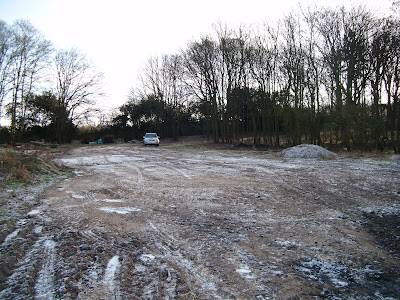
2
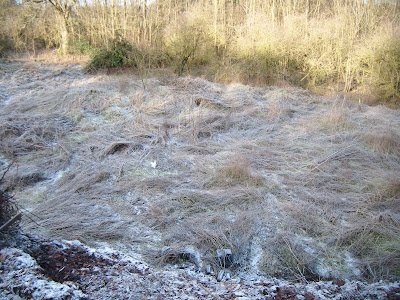
3
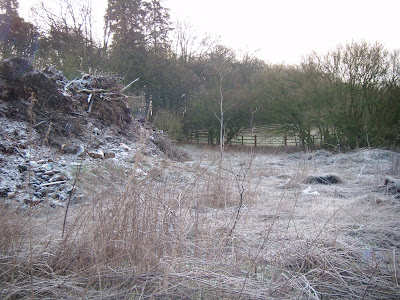
4
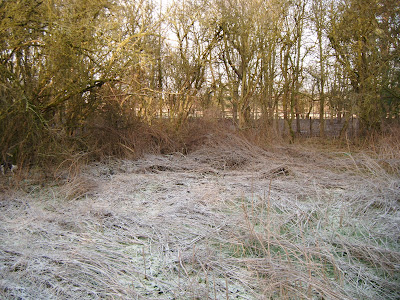
5
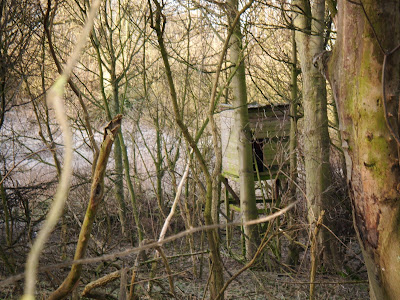
6
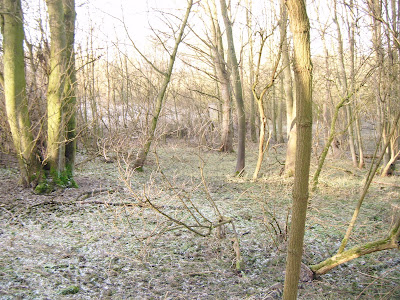
The next area is known as 'The Castle', as a 12th Century castle once stood there. The moat is still visible as the enormous ditch (Picture 9)surrounding the hill. This location is even more remote than the last, although the large amount of trees restricts lighting, even when they are dead. The castle mound itselfhas several small pieces of ruin on it, as well as the mostly intact 'Ice House', which was originally used a food store(Picture8). Although it is impossible to enter, the entrance itself is extremely sinster looking (Picture 7).
7
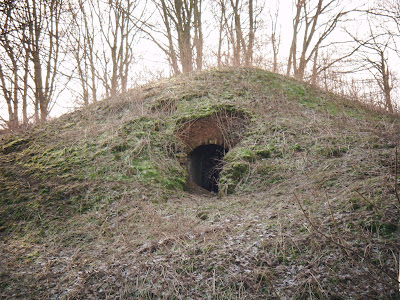
8
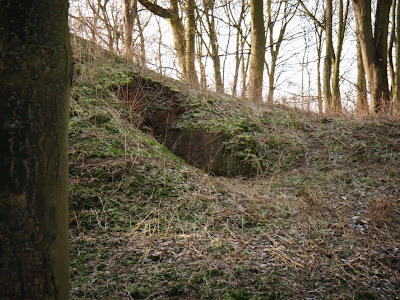
9

1

2

3

4

5

6

The next area is known as 'The Castle', as a 12th Century castle once stood there. The moat is still visible as the enormous ditch (Picture 9)surrounding the hill. This location is even more remote than the last, although the large amount of trees restricts lighting, even when they are dead. The castle mound itselfhas several small pieces of ruin on it, as well as the mostly intact 'Ice House', which was originally used a food store(Picture8). Although it is impossible to enter, the entrance itself is extremely sinster looking (Picture 7).
7

8

9

Labels:
Gabriel Clarke,
Sade Mills- Isiorho,
Tom Snell,
Victor Mishra
Analysis of psychological, political, action and crime thrillers
Psychological Thrillers
A psychological thriller is a sub-genre of the thriller genre. This genre often incorporates elements from the mystery and drama genre in addition to the typical traits of the thriller genre.Generally, thrillers focus on plot over the character, to emphasize physical action. Psychological thrillers tend to reverse this, emphasizing the characters just as much, if not more, than the plot.The suspense created by psychological thrillers often comes from the characters minds, either by playing deceptive games with each other or by trying to demolish the others mental state. Examples of psychological thrillers are The Signal, Strangers on a Train, Psycho and Vertigo.
* Psychological – Elements that are related to the mind or processes of the mind; they are mental rather than physical in nature.
* Thriller – A genre of fiction that attempts to "thrill" its audience by placing characters at great risk. This constant unease throughout the story makes the narrative suspenseful to the reader by creating a tense atmosphere.
* Psychological + Thriller – By combining these two terms, the definition changes to a narrative that makes the characters exposed to danger on a mental level rather than a physical one. Characters are no longer reliant on physical strength to overcome their brutish enemies (which is often the case in typical action-thrillers), but rather are reliant on their mental resources, whether it be by battling wits with a formidable opponent or by battling for equilibrium in the character's own mind.
Political Thrillers
A political thriller is a thriller that is set against political power struggle. They usually involve various plots, rarely legal, designed to give political power to someone, while his opponents try to stop him from getting it. They can involve national or international political scenarios. World War II and the US presidential elections tend to be favourite scenarios within most political thrillers. Examples of political are Air Force One, Conspiracy Theory, Primal Fear and City Hall.
Action Thrillers
Action thrillers contain lots of violence. They usually contain large amounts of guns, explosions, and large set pieces for the action to take place. These films often have elements of mystery films and crime films but these elements take a backseat to action. Examples of action thrillers are the James Bond films, The Transporter, and the Bourne films.
Crime Thrillers
This particular genre offers suspenseful crime or crimes. They often focus on the criminal(s) rather than police officers. Crime thrillers usually emphasize action. Central topics of these films include murders, robberies, chases and shootouts. Examples of crime thrillers are The Killing, Seven, Reservoir Dogs, Inside Man, and The Asphalt Jungle.
A psychological thriller is a sub-genre of the thriller genre. This genre often incorporates elements from the mystery and drama genre in addition to the typical traits of the thriller genre.Generally, thrillers focus on plot over the character, to emphasize physical action. Psychological thrillers tend to reverse this, emphasizing the characters just as much, if not more, than the plot.The suspense created by psychological thrillers often comes from the characters minds, either by playing deceptive games with each other or by trying to demolish the others mental state. Examples of psychological thrillers are The Signal, Strangers on a Train, Psycho and Vertigo.
* Psychological – Elements that are related to the mind or processes of the mind; they are mental rather than physical in nature.
* Thriller – A genre of fiction that attempts to "thrill" its audience by placing characters at great risk. This constant unease throughout the story makes the narrative suspenseful to the reader by creating a tense atmosphere.
* Psychological + Thriller – By combining these two terms, the definition changes to a narrative that makes the characters exposed to danger on a mental level rather than a physical one. Characters are no longer reliant on physical strength to overcome their brutish enemies (which is often the case in typical action-thrillers), but rather are reliant on their mental resources, whether it be by battling wits with a formidable opponent or by battling for equilibrium in the character's own mind.
Political Thrillers
A political thriller is a thriller that is set against political power struggle. They usually involve various plots, rarely legal, designed to give political power to someone, while his opponents try to stop him from getting it. They can involve national or international political scenarios. World War II and the US presidential elections tend to be favourite scenarios within most political thrillers. Examples of political are Air Force One, Conspiracy Theory, Primal Fear and City Hall.
Action Thrillers
Action thrillers contain lots of violence. They usually contain large amounts of guns, explosions, and large set pieces for the action to take place. These films often have elements of mystery films and crime films but these elements take a backseat to action. Examples of action thrillers are the James Bond films, The Transporter, and the Bourne films.
Crime Thrillers
This particular genre offers suspenseful crime or crimes. They often focus on the criminal(s) rather than police officers. Crime thrillers usually emphasize action. Central topics of these films include murders, robberies, chases and shootouts. Examples of crime thrillers are The Killing, Seven, Reservoir Dogs, Inside Man, and The Asphalt Jungle.
Labels:
Gabriel Clarke,
Sade Mills- Isiorho,
Tom Snell,
Victor Mishra
Thursday, 28 January 2010
Blog advice from Andrea
Your blog is designed to evidence the research and planning you have done before you start filming your thriller.
A blog in the 'excellent' category could include some of the following detail:
1. Analysis of student thriller
2. More than one detailed analysis of real thriller openings
3. Practise soundtrack for your thriller
4. Practise soundtrack for Taking Lives intro
5. Production company logo
6. Definition of thriller, outline of different sub-genres and hybrids
7. Analysis of examples of political, psychological, action thriller and crime thriller
8. Initial ideas post
9. Final idea post - for pitch
10. Influences and the thriller generic conventions you intend to explore
11. Mood board
12. Research into other films of similar sub-genres
13. Props list - with illustrations
14. Details of costumes - with illustrations
15. Location report - where you intend to film, if it is a public place then you need to consider the logistics of filming there. If it is private property you must seek permission from the owner.
16. Complete shot list
17. Completed storyboard
18. Test footage with a full explanation as to the technique you were testing and how successful the test was.
19. Details of when you intend to film (dates, times and places), who is responsible for bringing what props etc, what actors are needed and who is in charge of ensuring the actors are informed of times and locations.
20. Practise titles, consider the job titles and the names you wish to include. Do some research into titles. Look at Saul Bass as an industry expert in title sequences.
21. Tame lions
A blog in the 'excellent' category could include some of the following detail:
1. Analysis of student thriller
2. More than one detailed analysis of real thriller openings
3. Practise soundtrack for your thriller
4. Practise soundtrack for Taking Lives intro
5. Production company logo
6. Definition of thriller, outline of different sub-genres and hybrids
7. Analysis of examples of political, psychological, action thriller and crime thriller
8. Initial ideas post
9. Final idea post - for pitch
10. Influences and the thriller generic conventions you intend to explore
11. Mood board
12. Research into other films of similar sub-genres
13. Props list - with illustrations
14. Details of costumes - with illustrations
15. Location report - where you intend to film, if it is a public place then you need to consider the logistics of filming there. If it is private property you must seek permission from the owner.
16. Complete shot list
17. Completed storyboard
18. Test footage with a full explanation as to the technique you were testing and how successful the test was.
19. Details of when you intend to film (dates, times and places), who is responsible for bringing what props etc, what actors are needed and who is in charge of ensuring the actors are informed of times and locations.
20. Practise titles, consider the job titles and the names you wish to include. Do some research into titles. Look at Saul Bass as an industry expert in title sequences.
21. Tame lions
Conventions of our thriller compared to other thrillers.
There are many ways in which our thriller conforms to certain conventions of other thrillers. Our crime thriller keeps the audience excited and on the edge of their seats from the very beginning due to the unanswered questions that they have.
These questions occur because of the nature of the narrative and the camera work. Such an example is how most of the filming is done through the use of point of view shots. This type of shot only portrays what the character is seeing, therefore leaving the audience puzzled as to who is he? Why is he there? What is the relationship between him and the two other men? And finally, what are the two men talking about?
The use of editing in thrillers is essential in creating the right atmosphere. Quick cuts increase the pace of the action which means that the audience can experience danger whilst being safe, providing them a 'thrill'.
The editing and camerawork can also promote realism in the sense that, it can happen to you which makes you tense.
We derived some of our ideas from these conventions of thrillers which influenced us. An example is how we decided to shoot most of our opening with a point of view shot and also using fast cuts.
Even though Halloween is a horror film, it is a good example of an opening sequence that uses the point of view shot.
These questions occur because of the nature of the narrative and the camera work. Such an example is how most of the filming is done through the use of point of view shots. This type of shot only portrays what the character is seeing, therefore leaving the audience puzzled as to who is he? Why is he there? What is the relationship between him and the two other men? And finally, what are the two men talking about?
The use of editing in thrillers is essential in creating the right atmosphere. Quick cuts increase the pace of the action which means that the audience can experience danger whilst being safe, providing them a 'thrill'.
The editing and camerawork can also promote realism in the sense that, it can happen to you which makes you tense.
We derived some of our ideas from these conventions of thrillers which influenced us. An example is how we decided to shoot most of our opening with a point of view shot and also using fast cuts.
Even though Halloween is a horror film, it is a good example of an opening sequence that uses the point of view shot.
Labels:
Gabriel Clarke,
Sade Mills- Isiorho,
Tom Snell,
Victor Mishra
Preliminary Shot List
Point of View shot: The entirety of the first section will be filmed from the characters perspective.
Long Shot: One the gun being fired, a long shot will show the murderer, the two men and the victim (previously the cameras point of view).
Close up and extreme Close ups: After the character is shot, fast cuts of close ups ans extreme close ups take over. These shots will feature pieces of police equipment, forms and photographs of the crime scene. The credits will play over these images.
Long Shot: One the gun being fired, a long shot will show the murderer, the two men and the victim (previously the cameras point of view).
Close up and extreme Close ups: After the character is shot, fast cuts of close ups ans extreme close ups take over. These shots will feature pieces of police equipment, forms and photographs of the crime scene. The credits will play over these images.
Labels:
Gabriel Clarke,
Sade Mills- Isiorho,
Tom Snell,
Victor Mishra
Project Brief
Create a 2-3 minute opening sequence for a new, original thriller.
Function of an opening:
Function of an opening:
- To introduce characters
- To establish genre
- To introduce location
- To set the mood
Labels:
Gabriel Clarke,
Sade Mills- Isiorho,
Tom Snell,
Victor Mishra
Tuesday, 26 January 2010
Pitch for Thriller opening
The basic idea for our thriller opening is this:
We open with a Point of view shot, but the camera is covered, in this case showing the characters head is covered, so only a small amount of light can be seen. Heavy breathing and quiet talking can be heard in the background. The cover is removed from the camera, revealing the camera/character is being dragged on his knees through a remote location by two men. The screen is slightly blurred with a soft focus, as is the audio. As he is dragged along, another man comes into sight. He says something to the camera, though it is heavily distorted. A gun is pointed at the camera/character. When it is fired,we cut to extreme close ups of police filling out various forms, dialing phones etc. There is then fast cuts to photographs of crime scene, evidence and other objects. The sub genre that our opening will belong to is Crime Thriller.
Locations we will need include various deserted locations / derelict buildings. The main criteria is somewhere devoid of traffic/general background noise, so it appears as secluded as possible.
Our actors will comprise mostly of the members of our group, although we may need other people to fill in certain roles
We open with a Point of view shot, but the camera is covered, in this case showing the characters head is covered, so only a small amount of light can be seen. Heavy breathing and quiet talking can be heard in the background. The cover is removed from the camera, revealing the camera/character is being dragged on his knees through a remote location by two men. The screen is slightly blurred with a soft focus, as is the audio. As he is dragged along, another man comes into sight. He says something to the camera, though it is heavily distorted. A gun is pointed at the camera/character. When it is fired,we cut to extreme close ups of police filling out various forms, dialing phones etc. There is then fast cuts to photographs of crime scene, evidence and other objects. The sub genre that our opening will belong to is Crime Thriller.
Locations we will need include various deserted locations / derelict buildings. The main criteria is somewhere devoid of traffic/general background noise, so it appears as secluded as possible.
Our actors will comprise mostly of the members of our group, although we may need other people to fill in certain roles
Labels:
Gabriel Clarke,
Sade Mills- Isiorho,
Tom Snell,
Victor Mishra
Tuesday, 19 January 2010
Student thriller analysis :Easy target
There are many ways in which "Easy Target" follows the codes and conventions of a thriller. It uses fast cuts to help the narrative move along, whilst not revealing to much of the plot. The props used show details about plot, with the gun showing possible plot details. The fear of the unknown is created by never revealing the murderers face, with it being out of shot or otherwise obscured. However, we the soundtrack used doesn't fit with the footage shown. It is not contrasting enough to qualify as contrapuntal sound, but it is still illfitting for the piece. Also, it drowns out the dialogue to the point it can't be understood at all.
Labels:
Gabriel Clarke,
Sade Mills- Isiorho,
Tom Snell,
Victor Mishra
Why Thrillers Thrive- Sade Mills-Isiorho
'Our nature is such that we must have these shake-ups'(thrills). The best way of experiencing this is 'artificially' through the medium of cinema/ film. When watching these thrills we can see things happening in front of us, which can allow us to sympathise with characters gaining realism and excitement but also detaches the audience from the danger, making them feel safe and secure. Realism can be accessed through many different conventions such as, location and characters because they can allow the audience to relate to what is happening in the film which can create suspense and help towards making a better experience for the audience.
Why Thrillers Thrive-Tom Snell
The thriller genre is so popular because it offers the audience the chance to experience danger and excitement in a safe environment, with the danger involved is realistic and believable. This believability makes you feel that it could plausibly happen to you as many of the characters are often just ordinary people, with normal lives. You have sympathy for the character and an emotional response is generated as their back stories are often revealed.
Friday, 15 January 2010
District 13 opening
The opening sequence to District 13 uses many conventions of the thriller genre. For example , fast paced music and action, a flawed hero, suspense, fear of the unknown,and shadowy lighting. It uses action thriller conventions as well, e.g. subtle violence, stunts, high action and a plot suited location in this case an urban, crime riddled environment. The props used show the plot revolves around crime as guns and bomb making equipment features heavily. The costumes also do this, with the villains wearing body armour, tattoos and body piercings. This makes them look aggressive, but also easily distinguishable from the films protaganist.
Labels:
Gabriel Clarke,
Sade Mills- Isiorho,
Tom Snell
Thursday, 14 January 2010
Fight Club opening analysis
The opening sequence to fight club shows how the theme of the film will focus on psychology and the brain, it does this by travelling through the characters brain behind the opening credits. Then zooms out through his head to reveal his face, but not any of this surroundings which creates mystery and asks questions. The fact that his face is bruised adds mystery as it is not revealed why. Similarly a gun is pointed at him although it is not revealed why. The non-diegetic music breaks convention in that it starts with a more traditional orchestral piece that is cancelled by record scratching with a heavy guitar track taking over, this confuses the viewer.
Labels:
Gabriel Clarke,
Sade Mills- Isiorho,
Tom Snell,
Victor Mishra
Tuesday, 12 January 2010
Rear Window : Conventions
Conventions that this clip conforms to include:
- A flawed hero
- Location: busy
- Voyeurism
- Objectification of women
Labels:
Gabriel Clarke,
Sade Mills- Isiorho,
Tom Snell,
Victor Mishra
What is a thriller?
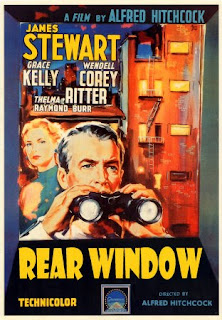
Thriller is a broad genre of literature, film and television that includes numerous and often overlapping sub-genres. Thrillers are characterized by fast pacing, frequent action, and resourceful heroes who must thwart the plans of more-powerful and better-equipped villains.
Example of a classic thriller:
Rear Window is a 1954 American suspense film directed by Alfred Hitchcock, written by John Michael Hayes based on Cornell Woolrich's 1942 short story "It Had to Be Murder". It stars James Stewart as photographer L. B. "Jeff" Jefferies, who spies on his neighbors while recuperating from a broken leg; Grace Kelly as Jeff's girlfriend Lisa Fremont; Thelma Ritter as his home care nurse Stella; Wendell Corey as his friend, police detective Tom Doyle; and Raymond Burr as Lars Thorwald, one of his neighbors.
Labels:
Gabriel Clarke,
Sade Mills- Isiorho,
Tom Snell,
Victor Mishra
Thriller Deadlines
11th Jan to 15th Jan: Thriller introduction.
18th Jan to 22nd Jan: Analysis of real and student examples/ Production logos.
25th Jan to 29th Jan: Planning and delivery of pitches.
1st Feb to 5th Feb: Storyboarding, shot lists and other planning.
Cameras are available from Friday 5th Feb at 4.10pm until shooting deadline of 9am Monday 8th March. Students can have 2 overnights or one weekend to film. There are three weekend slots available ( 6th & 7th Feb, 27th & 28th Feb and 6th & 7th March).
8th Feb to 12th Feb: Filming.
15th Feb to 19th Feb: HALF TERM. NO CAMERAS OUT.
22nd Feb to 26th Feb: Filming and editing.
1st March to 5th March: Filming and editing.
8th March to 12th March: 8th March Shooting deadline. 2nd lesson of this week is Rough Cut Deadline. Third lesson of week, rough cut feedback.
15th March to 19th March: End of second lesson of the week is Final Cut Deadline. Last lesson of the week, feedback on final cuts and re-introduction to Evaluation questions.
22nd March to 26th March: 9am 22nd March is Interim writing deadline. Lessons this week are for feedback on interim drafts and revisions/writing.
9am 29th March: Final writing deadline.
Labels:
Gabriel Clarke,
Sade Mills- Isiorho,
Tom Snell,
Victor Mishra
Tuesday, 5 January 2010
Definitions
Shot reverse shot is a film technique where one character is shown looking at another character (often off-screen), and then the other character is shown looking "back" at the first character. Since the characters are shown facing in opposite directions, the viewer assumes that they are looking at each other.
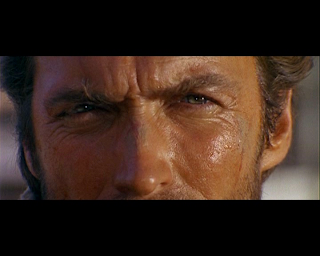
A match on action is a technique used in film editing, is a cut that connects two different views of the same action at the same moment in the movement, by carefully matching the movement across the two shots. It allows us to see actions such as opening a door from two angles.
The 180° rule is a basic guideline in film making that states that the camera should never cross the imaginary straight line whilst filming a narrative.
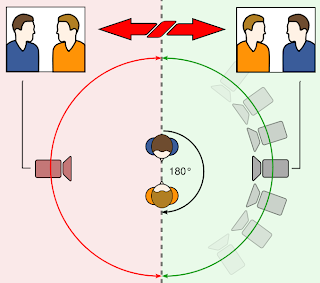

A match on action is a technique used in film editing, is a cut that connects two different views of the same action at the same moment in the movement, by carefully matching the movement across the two shots. It allows us to see actions such as opening a door from two angles.
The 180° rule is a basic guideline in film making that states that the camera should never cross the imaginary straight line whilst filming a narrative.

Labels:
180 Rule,
Gabriel Clarke,
Sade Mills- Isiorho,
Tom Snell,
Victor Mishra
Tuesday, 15 December 2009
Subscribe to:
Comments (Atom)




